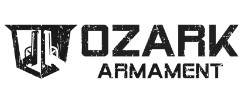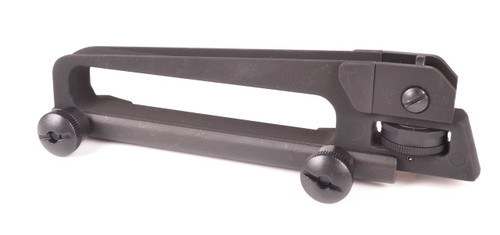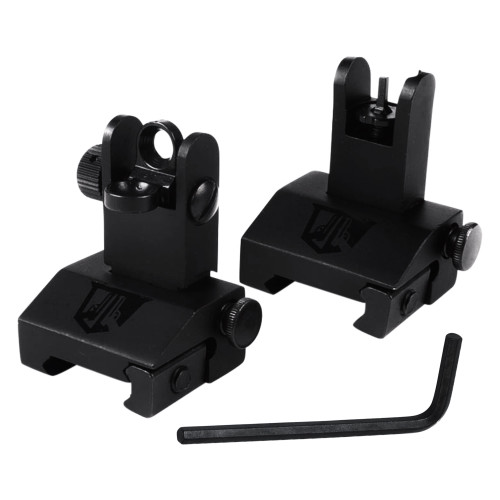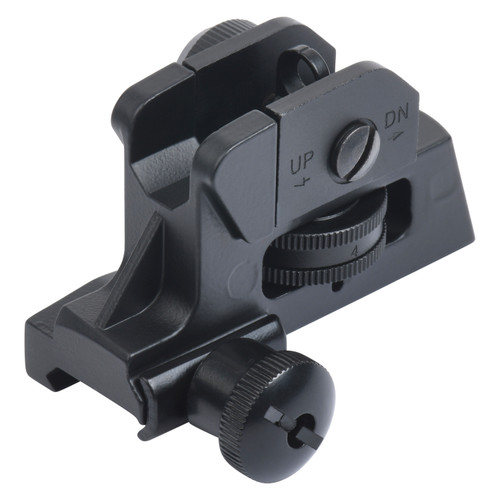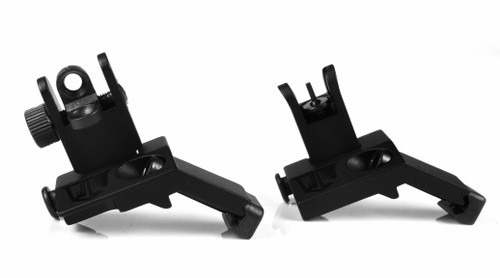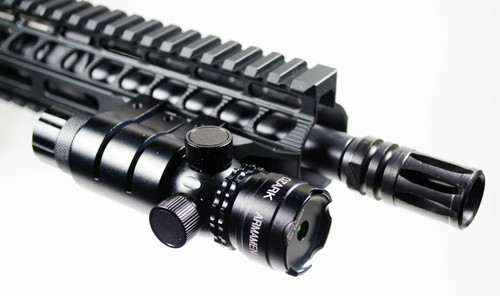Posted by Matt Rice on Jun 6th 2022
How to Use Iron Sights - A Practical Guide
Iron sights can be described as a system of physical alignment markers utilized as a sighting device that assists in aiming ranged weapons accurately. The name iron is historical because ancient firearms were made of iron.
It is made up of two pieces, the front sight, which is fastened at the front of the barrel (muzzle), and the rear sight, which is fastened at the back of the barrel (the breech).
All shooters need to learn to aim with iron sights. A majority of handguns require it. Shooting using iron sights inculcate great shooting habits. It is also a valuable and satisfying skill, especially when using a long gun.
On Target: A Comprehensive Guide to Using Iron Sights for Precision Shooting
Iron Sight Aiming Basics
Iron sights come in various models. Regardless of the sight type, the basics will still be similar. Sight alignment is essential if you want to shoot accurately. To achieve this, you need to put a couple of things in order.
Sight Picture
A sight picture can be described as what your mind sees when taking the shot. When preparing for a shot, you should endeavor to focus on the front sight. After the target has been identified and what is beyond it, your focus should be shifted to the front sight and keep it there. You will achieve a 'solid front focus' needed to place a proper shot when the surroundings become blurry. Then move your sights into actual sight alignment, putting your body in a good position and controlling your breath. You can now make the shot.
Body Position
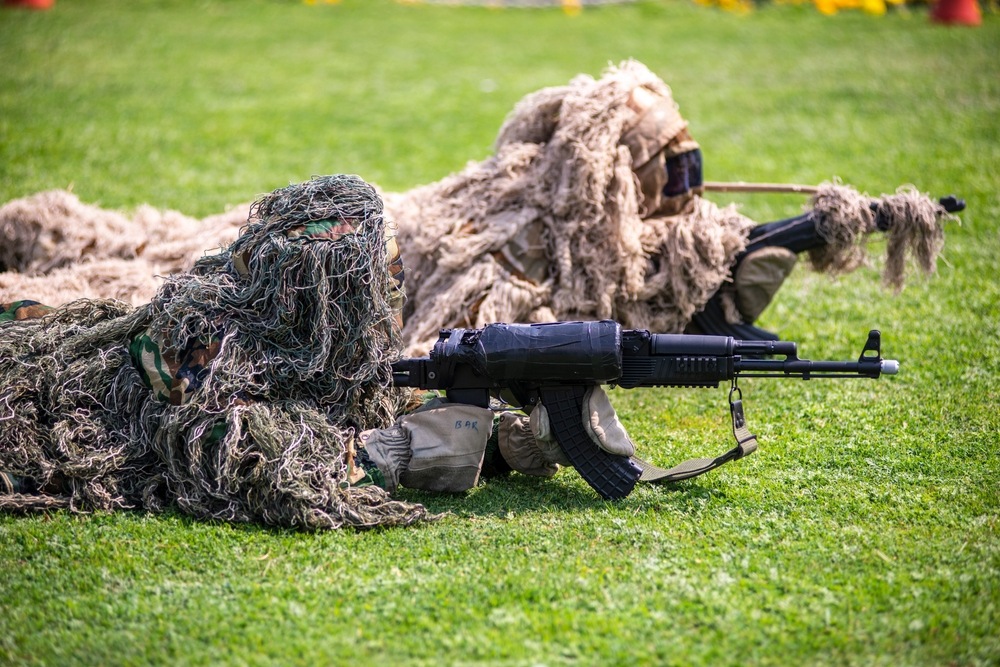
An appropriate body position will determine how accurate your shooting will be. After establishing your best shooting position, you can perform the "blind aiming" drill, also referred to as the "blind wiggle" for handguns. After focusing on a target, you should close your eyes while holding your gun at the shooting line. Lower the gun's muzzle and gently shift your upper body back and forth to reduce tension.
Lift the gun with your eyes still closed into an alleviated shooting position, then open your eyes. The target should be in line with the sighting line of the gun. If this is not the case, reset your position slightly to make corrections and repeat the process until you open your eyes and find the gun naturally pointed at the target.
Controlling Your Breath
Breath control is critical, especially when focusing on using any firearm, mainly if it has iron sights. You may be tempted to take aim and hold your breath as you try to get a perfect sight picture, then shoot. That method rarely brings out good results. Holding your breath leads to muscle tremors which affect your shot accuracy.
It is recommended that you breathe naturally as you acquire the target. You should then settle on your sight picture and breathe out enough air to relax your body to minimize movement and take the shot.
Trigger Control
Having trigger control means applying just enough pressure to the trigger when taking a shot without disturbing the sight picture. Using iron sights makes trigger control one of the most challenging elements when firing a gun.
You should apply slow but gradually increasing pressure rearwards until the trigger releases the sear to fire. You should not jerk the trigger when you believe the target is in focus. Applying steady pressure with lots of practice is essential.
Follow-Through, Call the Shot
Follow-through is the final stage of shooting, and it comes after a shot has been fired. After taking the shot, maintain rigid front sight focus, sight alignment, shooting form, grip, and position. When shooting, you need to freeze the sight picture in your mind and be ready to call the shot. You need to take your time and not skip this stage.
Aiming With an Open Sight
Rear open sights are available in shapes like a notch, "U," "V," wedge, buckhorn, etc. The basic principles surrounding their functionality remain the same for all of them. The front sight will usually be centered in the middle and level with the top of the rear sight. Centering is quite important. The front sight is centered in the middle of the target.
Some shooters favor a six o'clock hold - where the target rests on top of the front sight. Typically, this method is used for particular targets of a range & size.
Aiming With a Rear Peep or Aperture Sight
The peep sight has a circular hole that assists you in viewing the front sight and the target. You then center the top of the post or center the bead on the target and the center of the rear opening. You should maintain focus on the front sight. This true whether you're using BUIS or a carry handle rear sight.
Aiming With a Rear Peep and a Front Aperture Sight
The peep sight has a circular hole that assists you in viewing the front sight and the target. You then center the top of the post or center the bead on the target and the center of the rear opening. You should maintain focus on the front sight.
Iron Sight Adjustment
Different types of iron sights have their unique method of adjustment or lack thereof. It is essential to read the complete book (RTFB) and know your sighting system's specifics.
Two basic principles should be followed when adjustments are needed:
- Move the rear sight in the direction you need the bullet holes to go
- The front sight must be moved in the opposite direction that you want the bullet holes to go
Zeroing and Bore Sighting Your Iron Sight
Zeroing is also known as sighting in. It is the adjustment of the rifle to ensure that the line of aim intersects with the bullet's trajectory at the right point, i.e., your target.
The front and rear sight of your iron sight work to adjust the vision to get a perfect shot. If you use your rifle without zeroing in and without sight alignment, it may lead to bullets flying all over the place.
Before zeroing your rifle, you should bore sight it first (this is the process of adjusting the sights or optics on a rifle so that the firearm barrel and sights are aligned).
It ensures that your front and rear sights align perfectly with your barrel to aim at the same point that the barrel is pointing at. If your front and rear sights are not aligned with the barrel, your bullets will go in the opposite direction to the point you are aiming at.
The process is done to pre-align the front and rear sights before you start zeroing them to make the procedure much faster. It is essential to take your time when adjusting the front and rear sights to shoot with confidence when you see the target in your front sight. You need to focus on your front sight to increase your chances of hitting the target.
Here is how to zero your rifle:
- Choose a stable surface to do the job. Ensure that you and your rifle are on a steady, unwavering surface when calibrating your rifle. The slightest mistake may lead to significant deflections off the target.
- Choose the distance you want to zero in on. Place a target at your preferred option, take a few shots, and see where they land.
- Adjust your iron sights (front and rear sights) based on where the bullets hit to ensure that the points of aim and impact are perfectly aligned. Adjust the front and rear sights accordingly where possible.
- Fire more rounds at the target to gauge how well you have done your zeroing. You can make adjustments if you find out that the bullets are still slightly off the mark.
You can start shooting after performing sight alignments and zeroing the rifle to your chosen distance.
How Do Iron Sights Work?
They provide you (the shooter) with horizontal and vertical reference points to aim at targets more accurately. The iron sights do not have magnifying properties, inconveniencing you when you're looking to shoot beyond certain distances.
Rifle bullets don't travel in straight lines. Therefore, these sights are crucial in knowing the trajectory that your bullet will take to make sure you hit the target. The sights assist in aligning the target with the gun, ensuring that the shooter gets the exact target.
Rifles are slightly curved, and they shoot at specific angles. Therefore, if you decide to shoot using your naked eye to aim, you will miss the target entirely. The sights help identify the target and align the gun so that the bullet hits the spot, no matter the trajectory.
How Accurate Are Iron Sights and How Far Can You See Using Them?
When set up and aligned correctly, iron sights can be pretty accurate. With regular practice, iron sights will get you the accuracy you need. They can be accurate as far as you can see.
Competitors in a shooting competition usually shoot at 1000 yards or more. For casual hunters, they can shoot mid-sized games that are under 200 yards. More accomplished hunters can make shots that are further away.
However, you need to factor in the quality of the iron sight. A good iron sight offers you a better sight picture and better aim, while low-quality iron sights don't provide you with the same sight picture from longer distances and smaller targets.
You need to study the basics of good shooting, know your sighting system, and practice regularly to improve your skills. Iron sights have some particular benefits that include:
Weight
Iron sights add minimal weight to the gun. This ensures that the original balance of the gun is maintained. The reduced carry weight is beneficial to lightweight field rifles and stalking guns.
Scopes are bought separately from the guns and need to be latched onto a weapon. It means that they add additional weight to the firearm. Iron sights do not come with this challenge. Extra load translates to further difficulty in loading, and iron sights can do without this.
Durability
Iron sights can persevere through any conditions since they are sturdy and reliable. With the added advantage of flip-ups, you can fold them for convenience.
Low Maintenance
Iron sights do not have batteries to change or lenses to clean. They also have an unlimited field of view, and you can acquire moving targets fast.
Cost
Quality iron sights are less expensive than a scope or optic. This is of course great when considering a budget for your build.
Accuracy
When you are within 200 yards, you can shoot using iron sights with a lot of accuracy.
Better View
Scopes make zooming in on targets much more effortless. However, iron sights offer you a complete view of your aim. You can calculate whether your shot will threaten the environment and make adjustments on time. This is advantageous, especially when hunting since you can spot different targets simultaneously, do your analysis, and make an informed decision.
Water and Weather
In case there is bad weather or too much rain, iron sights do not fog up or get bothered. You can still carry on with your activity.
No Batteries
Another advantage of using iron sights is that they do not require batteries, meaning you will never find yourself stuck scrambling for surrogated batteries while losing valuable time.
Types of Iron Sights
Contrary to the name, iron sights are not made of iron. They are manufactured using various materials, including steel, brass, and aluminum.
Generally, iron sights have two reference points mounted on the firearm that helps the line of sight and bullet path to be aligned.
There are two major types of iron sights, open and peep or aperture sight. An open sight is a rear sight that has a notch or mark for reference. On the other hand, an aperture or peep sight has a circular hole as a rear sight. Its front sight can either be a blade, bead, or aperture.
Sight Alignment
Sight alignment can be defined as lining up the rear sight and the front sight. The two types of sights are aligned differently.
Open sight: Modern muzzleloaders come with an adjustable open sight. When aiming, you line up the bead or post front sight in the rear sight's notch. The target should be at the top of the front sight.
Aperture or peep sight: They are more accurate than open sights. Just like open sights, the front sight is a bead or post. The rear sight consists of a round disk with a small peephole. You look via this hole and not at it. To line up the target with the front sight within the rear peephole. Old shooters will find the peep sights easier to use since the optical sharpening effect of the aperture compensates for the limitations of aging eyesight.
The Best Iron Sights for General Use
You might need iron sights for general use as a backup to your scope, and two types excel.
We start with the front sight used in combination with a rear peep. Accurate shooting requires a blade that is straight across the top and does not fade like a tapered post.
A skilled target shooter may sometimes use a square blade for a form of Kentucky windage. Expressions such as "half a blade left" or "a quarter-blade right" suggest that a shooter's compensating for the wind by being off-center by a half or a quarter of the width of the front sight. It requires lots of practice to be fast and precise.
Another front sight is the fiber-optic sight that is more visible than a blade. They mostly come in colors such as green, red, orange, and yellow. The fiber optics are very fragile. The front sights need protection from bangs and hard knocks. The military has been using steel "wings" on both sides of the sight.
For fiber-optic sights, the best protection is the Masterpiece Banded Ramp-Window Hood. It has two large cutouts that allow light in, so removing them is unnecessary to aim a fiber-optic sight.
The preferred choice is the ghost-ring aperture when it comes to the rear sight. It is a peep sight with an oversized aperture. When using it as a sight, your eyes will register the aperture as a "ghost" image and unconsciously center the front sight on it. This reduces the number of focal planes to deal with by ⅓.
A superb ghost ring should be small, not obstructive, and can adjust for elevation and windage. It should also be resilient. After you sight it in, there is no need to touch it again unless you are changing ammo.
How to Use Iron Sights as a Backup
If you are planning to use iron sights as a backup to a scope, you must be able to get the scope off the rifle when it fails. This is why quick-detachable or QD mounts are available. The majority of them clamp to a base or a rail through levers. There are several less expensive rings tailored for rails and weaver-style bases.
Remember to tighten the levers with a light touch. Tighten the levers using your fingers and check periodically if they are still tight.
Does the Military Use Iron Sights?
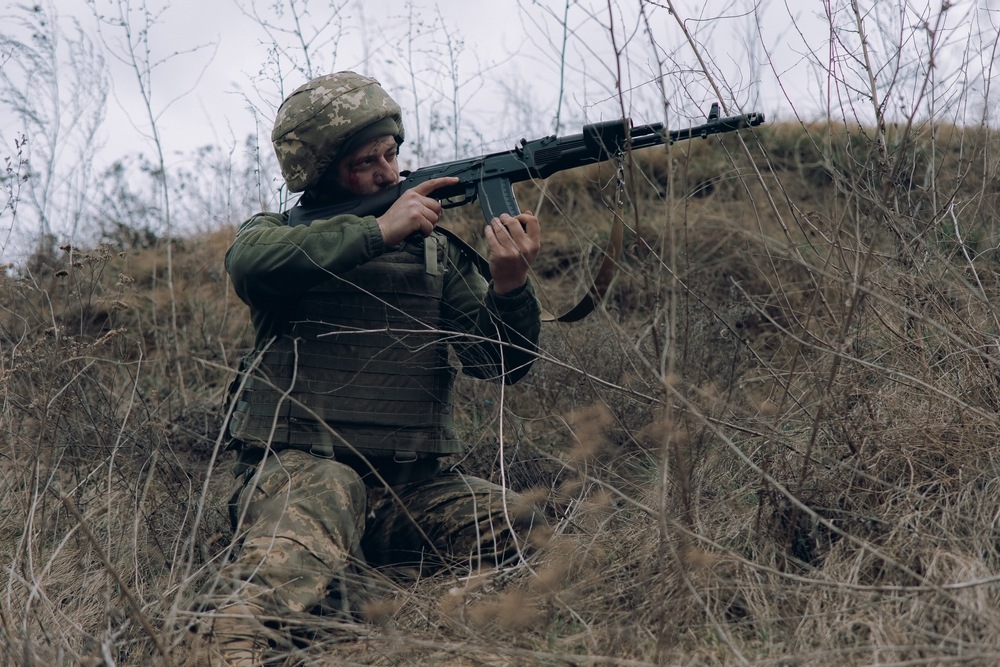
Military rifles come with iron sights, and even the recruits are still tested and undergo training on marksmanship using traditional rifles. Although the iron sights on these rifles can be removed and replaced with the red dot sights, they are still in-built in most modern military rifles.
The military personnel should be able to use their rifles in any condition and situation. Iron sights are the best to do the job since they work with bad lighting, without batteries, or when your rifle is banged up and bent out of shape.
Their reliability is why soldiers are still required to go through basic training with them and learn how to use iron sights. They have something to fall back on when modern sights and technologies do not work.
Many military rifles these days have a red dot or holographic sights mounted. However, the main disadvantage of these electronic optics is that they need a battery to function. The moment they run out of battery, they become a burden.
That is why users of red dots, including the military, install backup iron sights (BUIS) and set them up for co-witnessing. If the electronic optics fail, they will still have their front and rear sights to arm and defend themselves. Due to the convenience and efficiency of BUIS, these are fast becoming the preferred iron sights.
Aiming With Glasses
Prescription glasses correct various vision problems. You need to remember that focusing on the front sight is important in ensuring that you make an accurate iron sight shot.
When shooting a handgun, you can use a made-for-purpose single vision set of glasses and focus specifically on the front pistol sight at arm's length. When shooting using rifles with iron sights, you can use a pair of single vision glasses that allow you to focus on the rifle's front sight without straining.
Your optometrist can assist you by varying the focal distance of your prescription for extra glasses that suit your shooting requirements. There's no need to buy an expensive gun and ammo and cut corners for your vision.
The greatest tribute to iron sights is that they were standard on all military rifles for a very long time. There were no complaints raised about them. They also worked under horrific conditions. They can still perform the same for you.
Article Written By Matt Rice, Owner Operator of OZARK ARMAMENT
